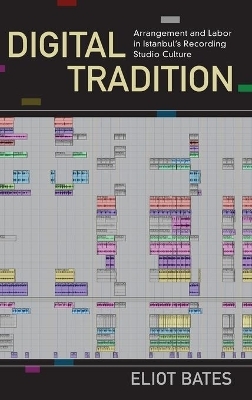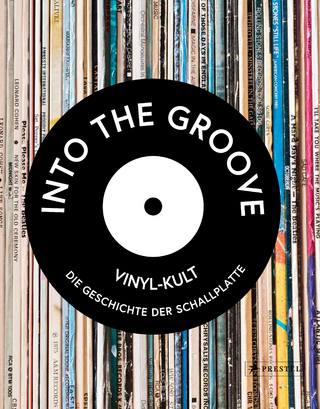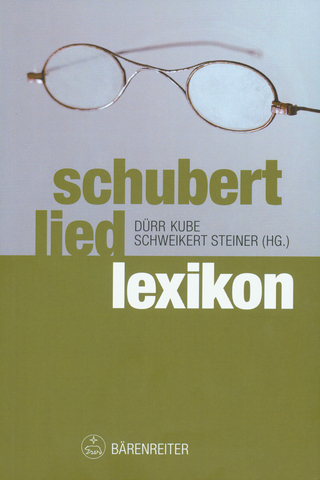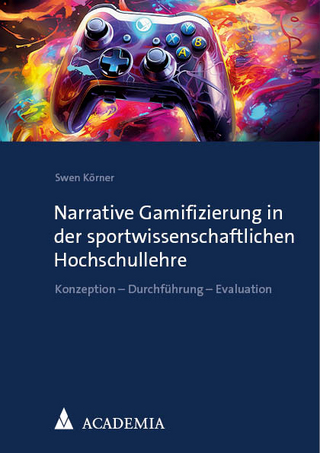
Digital Tradition
Oxford University Press Inc (Verlag)
978-0-19-021573-6 (ISBN)
Istanbul is home to a multimillion dollar transnational music industry, which every year produces thousands of digital music recordings, including widely distributed film and television show soundtracks. Today, this centralized industry is responding to a growing global demand for Turkish, Kurdish, and other Anatolian ethnic language productions, and every year, many of its top-selling records incorporate elaborately orchestrated arrangements of rural folksongs. What accounts for the continuing demand for traditional music in local and diasporic markets? How is tradition produced in twenty-first century digital recording studios, and is there a "digital aesthetics" to contemporary recordings of traditional music?
In Digital Traditions: Arrangement and Labor in Istanbul's Recording Studio Culture, author Eliot Bates answers these questions and more with a case study into the contemporary practices of recording traditional music in Istanbul. Bates provides an ethnography of Turkish recording studios, of arrangers and engineers, studio musicianship and digital audio workstation kinesthetics. Digital Traditions investigates the moments when tradition is arranged, and how arrangement is simultaneously a set of technological capabilities, limitations and choices: a form of musical practice that desocializes the ensemble and generates an extended network of social relations, resulting in aesthetic art objects that come to be associated with a range of affective and symbolic meanings. Rich with visual analysis and drawing on Science & Technology Studies theories and methods, Digital Tradition sets a new standard for the study of recorded music. Scholars and general readers of ethnomusicology, Middle Eastern studies, folklore and science and technology studies are sure to find Digital Traditions an essential addition to their library.
Dr. Eliot Bates is a scholar whose work focuses on the creative use of digital music technologies and the growth of hybrid digital music economies. An ethnomusicologist by training, he has conducted over three years of field research in Turkey, and is the author of Music in Turkey: Experiencing Music, Expressing Culture (OUP, 2011) and articles on musical instruments, aesthetics, studio architecture, and the emergence of an industry for Anatolian minority language popular musics. Eliot is a Lecturer in Ethnomusicology and Popular Music Studies at the University of Birmingham (UK). In addition to his scholarly interests, since 1994 Eliot has been a performer and recording artist on the oud, most recently (with organist Baby Dee) recording and performing as The Big Bumble Bees.
Contents
List of illustrations
Preface and acknowledgments
Notes about language
Map of Turkey
Part 1: A digital tradition of arrangement
Chapter 1: Arrangement and engineering
Arrangement and arrangers
Engineering and engineers
Social, technical, musical things
Research methodology
Chapter 2: Tradition
Discourses of tradition and place
Problems of place and identity
Traditions of work
Part 2: Arranged histories and arrangement industries
Chapter 3: Arranged folklore in early Republican Turkey
The demand for folklore
A source-resource model for analyzing derleme
Folklore at the birth of the Republic
Folklore institutions during the one-party era
Folklore and mass-media in the multi-party era
Musical practices of arrangement, cleaning and restoration
Cultural geographies of village, town, city and nation
Postscript: revisiting Altun Karahan
Chapter 4: The Anatolian "ethnic" music industry
The growth of Turkey's recorded music industry
Industries and ortak-s
Ethnic language politics and emerging markets
University ensembles: Grup Yorum, Karde,s Türküler and Zu&ga,si Berepe
Organizational and production networks: the role and legacy of Kalan Müzik Yapim
Concerns with foreign perceptions
Social networks and the nature of professions
Negotiating outside actors
Part 3: The recording studio assemblage in Istanbul
Chapter 5: The experience of studio work
Auditory images and "visions" of the song arrangement
Studio listening modalities and technologies of audition
Latencies
Built environments and social dynamics
Chapter 6: Digital
Hearing digital data, visualizing Anatolian soundings: synesthesia in the studio
Digital audio, music, and non-musical sound
Acoustic instruments and indirect computer users
Chapter 7: Aesthetic keywords of the studio
Introduction
Denge/denk/denk gelmek: balance and suitability
Fena de&gil and oldu galiba: the aesthetics of "not bad" when mixes happen
Tav)ir, yorum and the art of interpretation
Renk enstrümanlar)i
Parlak and büyük ses
Aesthetic relations
Part 4: Case studies in arranged music
Chapter 8: Arranged music and the dönem filmi genre
Analyzing film music and sound
The d:onem filmi genre
Vizontele (2001) and the formation of a new film music genre
Beynelmilel (2006) and the problems of leitmotif
Özlem Taner's "Kara Tren/ Seher :Inende"
D:onem films as technological tragic comedies
Chapter 9: Arranging the Black Sea
Finding the Karadeniz
G:okhan Birben, "Hele Mele" (on the outside)
G:okhan Birben, "Denizde Dalga Birdur" (there's a wave in the ocean)
Bizim Ya,sar Kabaosmano&glu, "Nenni Nenni"
Fatih Ya,sar "Sirlarumi Söyledum" (I told my secrets to the smoke on the mountain)
Fatih Ya,sar "Çiktum Yüksek Da&glara" (I headed up the high mountain)
Ay,senur Kolivar, "Mavili E,sarbumi / Lafun Aykirisi" (Blue scarf / Against this nonsense)
Chapter 10: Towards a methodology for the study of digital music production
Methodological Implications
Glossary
Bibliography
Mediagraphy (audio recordings, feature films, and TV shows)
Index
| Erscheinungsdatum | 25.05.2016 |
|---|---|
| Zusatzinfo | 89 |
| Verlagsort | New York |
| Sprache | englisch |
| Maße | 239 x 163 mm |
| Gewicht | 794 g |
| Themenwelt | Kunst / Musik / Theater ► Musik ► Allgemeines / Lexika |
| Kunst / Musik / Theater ► Musik ► Pop / Rock | |
| ISBN-10 | 0-19-021573-9 / 0190215739 |
| ISBN-13 | 978-0-19-021573-6 / 9780190215736 |
| Zustand | Neuware |
| Haben Sie eine Frage zum Produkt? |
aus dem Bereich


